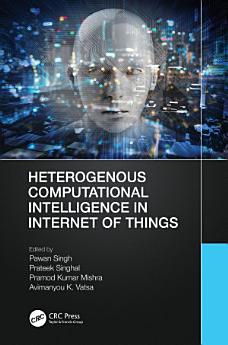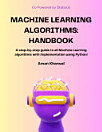Heterogenous Computational Intelligence in Internet of Things
關於本電子書
Deep Reinforcement Learning techniques provide great potential in IoT, edge and SDN scenarios and are used in heterogeneous networks for IoT-based management on the QoS required by each Software Defined Network (SDN) service. While DRL has shown great potential to solve emerging problems in complex wireless network virtualization, there are still domain-specific challenges that require further study, including the design of adequate DNN architectures with 5G network optimization issues, resource discovery and allocation, developing intelligent mechanisms that allow the automated and dynamic management of the virtual communications established in the SDNs which is considered as research perspective.
關於作者
Dr. Pawan Singh is an Associate Professor in the Department of Computer Science & Engineering, Amity School of Engineering and Technology, Amity University Uttar Pradesh, Lucknow, India. He has completed Ph.D. degree in Computer Science from Magadh University, Gaya. He has more than fifteen years of experience in research and teaching. He has published several research articles in SCI/SCIE/Scopus journals and conferences of high repute. He has also authored various books. He has various National and international patents and some are granted. He holds contributions in IEEE, Elsevier, etc. repute journals. He is also a reviewer in various reputed journals. His current areas of interest include Computer Networks, Parallel Processing and Internet of Things.
Mr. Prateek Singhal is an Assistant Professor in the Department of Computer Engineering & Applications at GLA University, Mathura, Uttar Pradesh. He is pursuing a Ph.D. degree in Medical Imaging from the Maharishi University of Information Technology, Lucknow, India. He has more than four years of experience in research and teaching. He has published several research articles in SCI/SCIE/Scopus journals and conferences of high repute. He has also authored a book on Cloud Computing. He has various National and international patents and some are granted. He holds contributions to IEEE, Elsevier, etc. reputed journals. He is on the team of the research advisory member in his present institute. His current areas of interest include Image Processing, Medical Imaging, Human Computation Interface, Neuro-Computing, Internet of Things.
Dr. Pramod Kumar Mishra is working as a Head and Professor in the Department of Computer Science & Engineering at Banaras Hindu University, Varanasi. He has completed Ph.D. degree on A study of efficient shortest path algorithms for serial and parallel computers from APS University, Rewa, India. He has more than Thirty years of experience in research and teaching. He has received various Awards and fellowships from the good repute organizations. He has also received various grants from national and international government bodies/Agency. He has published several research articles in SCI/SCIE/Scopus journals and conferences of high repute. He has also authored a book on Cloud Computing. He has various National and international patents and some are granted. He holds contributions in IEEE, Elsevier, etc. reputed journal. He is in the team of the research advisory member in his present institute. His current areas of interest include AI and Machine Learning Algorithms, Data Analytics, Parallel Computing, High-Performance Clusters, Algorithm Engineering (AE), High-Performance AE, Parallel Computation, and Computational complexity.
Dr. Avimanyou Vatsa is working as an assistant professor in the department of computer science, Fairleigh Dickinson University – Teaneck. He also worked as an assistant professor at West Texas A&M University, a teaching & research assistant at the University of Missouri, Columbia, and an assistant professor for more than ten years in several engineering colleges and a university in India. Also, he worked as a software engineer in the industry. He always motivates and inspires students with a statement: “Nothing is impossible, just put your hard work and sincere effort persistently toward your goal.





